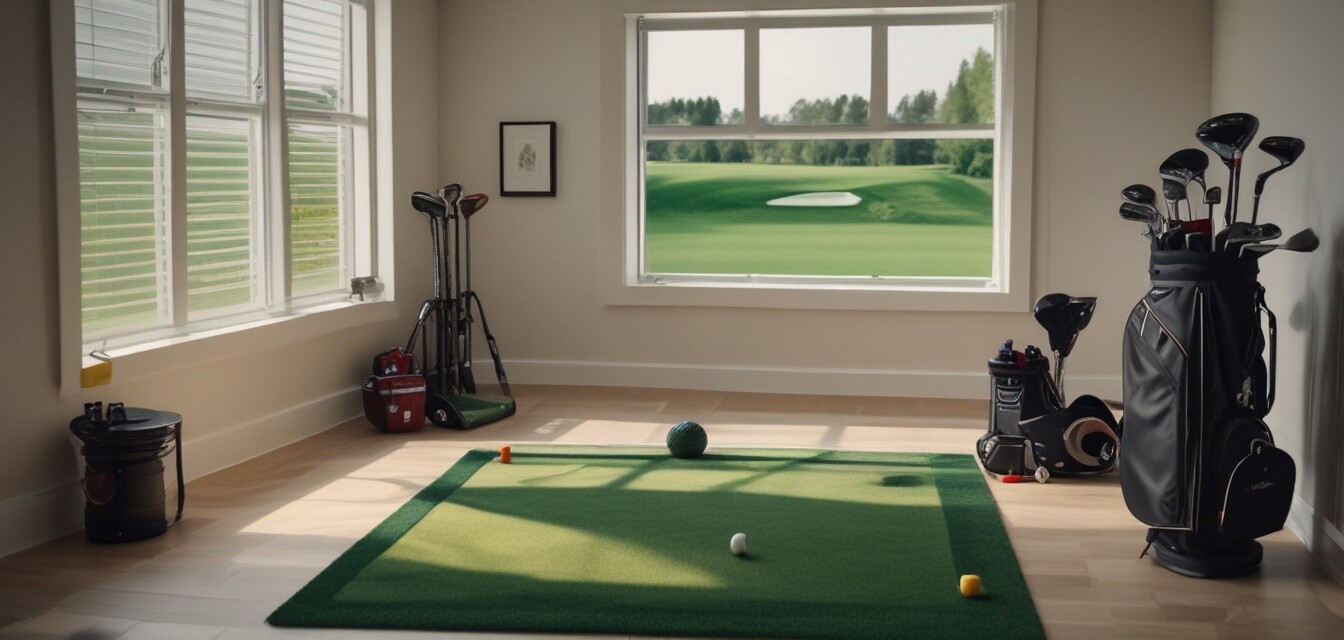
How to practice your left-handed swing at home
Improving your golf swing is essential for enhancing your game, especially for left-handed players. Practicing at home allows you to develop muscle memory and perfect your technique without the need for a golf course. In this article, we share effective tips for creating a home practice routine tailored for left-handed golfers. You'll find practical advice to enhance your swing and overall skills.
Key Takeaways
- Set up a dedicated practice area at home.
- Utilize training aids specifically designed for left-handed golfers.
- Incorporate various practice drills into your routine.
- Track your progress and adjust your techniques as needed.
- Stay consistent with your practice for the best results.
Creating your practice space
A designated practice area at home can significantly enhance your training experience. Here are some ideas for setting up your space:
- Choose a spacious room or a garage for your practice space.
- Consider using a golf simulator or a practice mat.
- Ensure adequate lighting and ventilation.
- Store your left-handed clubs and training aids neatly.
Essential training aids for left-handed golfers
Utilizing effective training aids can help improve your swing technique. Here are some must-have tools:
| Training Aid | Description | Benefits for Left-Handed Golfers |
|---|---|---|
| Swing Trainer | A tool designed to improve swing mechanics. | Helps with proper grip and swing path for lefties. |
| Alignment Sticks | Flexible rods to establish correct stance and alignment. | Ensures that left-handed players visualize accurate aim. |
| Putting Mat | A surface to practice putting skills indoors. | Allows for consistent practice of left-handed putting technique. |
Practice drills for enhancing your swing
Regular practice drills are crucial to improving your left-handed swing. Here are a few targeted exercises:
- Shadow Swings: Stand without a ball and practice your swing motion repetitively. Focus on form and balance.
- Half Swings: Use just your left hand for short swings. This emphasizes the movement and position of your leading hand.
- Slow Motion Swings: Transition through each part of your swing slowly to understand weight transfer and body movements.
- Chipping Drill: Use a small golf ball to chip into a target from various distances. Focus on the accuracy of your left-handed approach.
- Mirror Technique: Set up in front of a mirror to visually assess your posture and form during your swing.
Staying motivated and tracking progress
Maintaining motivation is key to consistent improvement. Here’s how you can stay engaged:
- Set specific goals for each practice session.
- Keep a journal to record your practice routines and improvements.
- Take video recordings of your swings to analyze form and technique.
- Engage with online communities of left-handed golfers for support and tips.
Conclusion
Practicing your left-handed swing at home is not only efficient but also allows for endless opportunities to enhance your skills. By creating a dedicated practice area, utilizing the right training aids, and incorporating effective drills, you can make consistent progress. Stay committed to your home practice routine, and you'll see significant improvements on the course.
Pros
- Convenient practice environment at home
- Flexible practice schedule
- Ability to focus on specific skills
Cons
- Limited space compared to outdoor practice
- Risk of developing bad habits without supervision
For more tips tailored to left-handed players, check out our Tips and Tricks category. Whether you are looking for guidance on your swing or other golf-related advice, we have resources to help you improve your game!